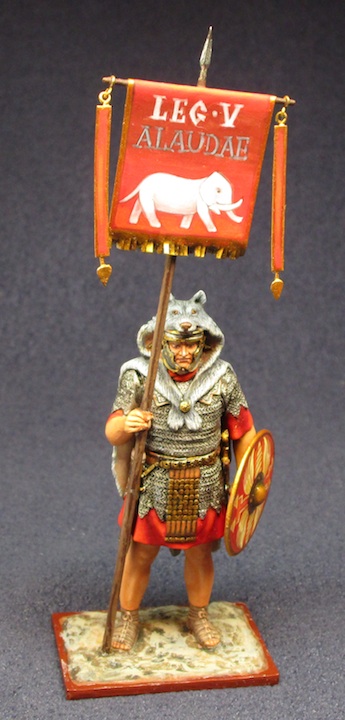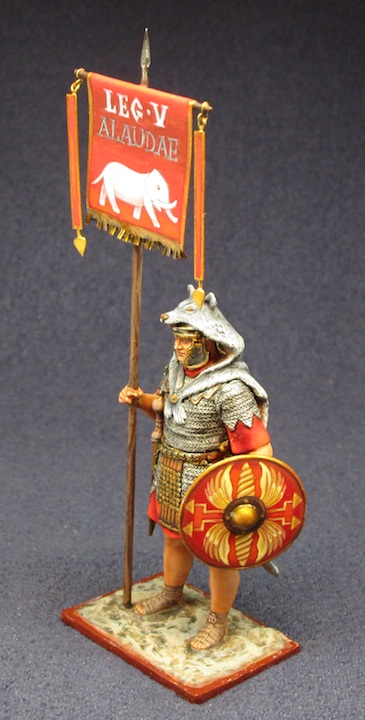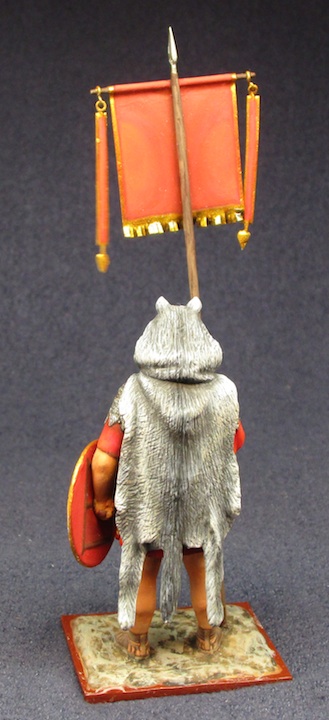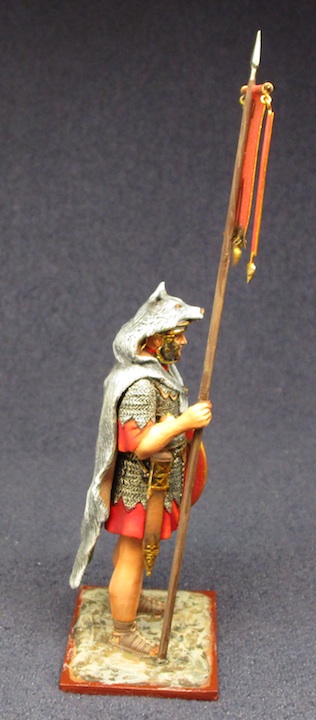V Legion "Alaudae" Signifer

1st Century BC
(St. Petersburg Collection 6312.9)
Records date a 5th legion in Spain back to 185 BC. Pompey the Great surrendered a 5th legion to Caesar in 49 BC. A reconstituted 5th legion was shipped to North Africa to take part in Caesar's campaign against Republican forces at the Battle of Thapsus in 46 BC. Caesar's enemy King Juba of Numidia fought the 5th with 60 war elephants. It was at this engagement that the 5th adopted the elephant as the symbol of the legion. The civil war over, Mark Antony had use of the 5th in tracking down Caesar's assassins Brutus and Cassius. In 29-17 BC the 5th served in the Cantabrian Wars in Spain for Octavian. By 17 BC the 5th was transferred to the Rhine frontier. For 80 plus years the 5th fought the German Celts. In 86 AD under the command of Praetorian Guard Prefect Cornelius Fuscus the 5th became part of an army fighting in Dacia for Emperor Domitian. Fuscus, who earlier in career had been an able commander, lost his whole army to the Dacians which included the entire 5th Legion and its Imperial Eagle.
Each century had a standard which displayed the unit's identification. Aditionally the unit standard would include the unit's awards and battle honors (philarae) posted on the standard staff. The junior officers who carried the standard were called signifiers. All the standard bearers wore animal skins over their armor to differentiate them.
When units of a legion would serve on detached duty with other legions their legion flag (vexilla) would be carried by their signifier.



 Up
Up





 Up
Up